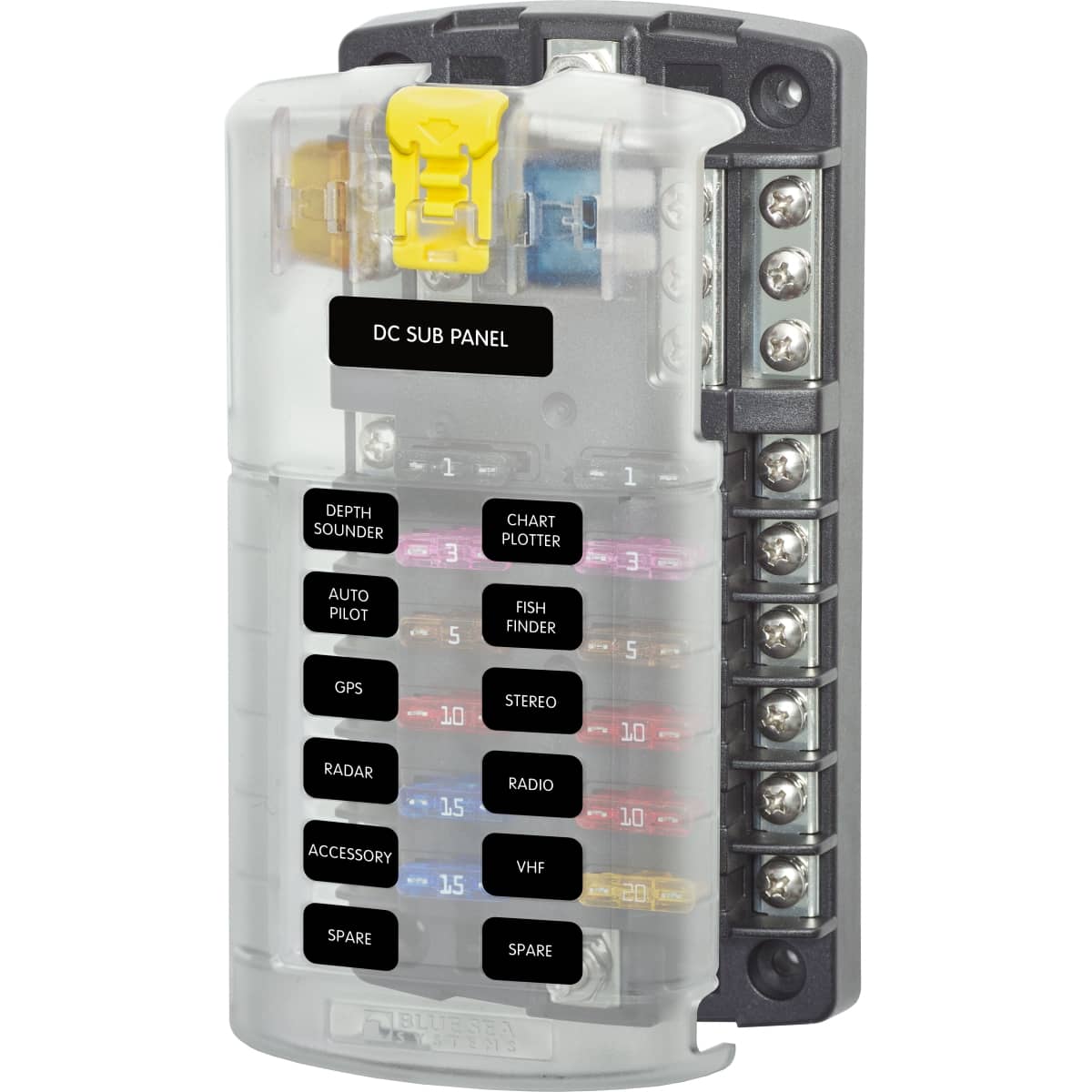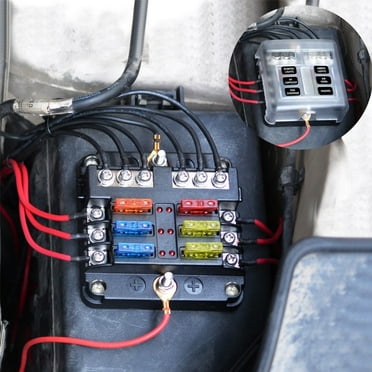Blue Sea Fuse Block - Questions
Wiki Article
Blue Sea Fuse Block - Truths
Table of ContentsHow Blue Sea Fuse Block can Save You Time, Stress, and Money.The Only Guide to Blue Sea Fuse BlockThe Best Guide To Blue Sea Fuse BlockGetting My Blue Sea Fuse Block To Work9 Simple Techniques For Blue Sea Fuse BlockNot known Details About Blue Sea Fuse Block
Fuses are bolted in area in between the bus bar and the second set of electrically isolated bolts. With this setup you can connect the boat's numerous high-current circuits, such as a windlass, bow thruster, high-output generator, the DC panel, and so on, to the isolated screws. The different fuses are sized according to the current-carrying capability of the conductors bolted to them.Some circuits will still need to bypass the seclusion button to make sure that they might be left on when the remainder of the boat is closed down. blue sea fuse block. These circuits commonly consist of a bilge pump and also any type of billing gadgets (consisting of solar panels, maybe a wind generator, and the inverter if it also increases as a battery charger).
This becomes part of the circuit diagram we developed for the facility instance boat in our Boat Electrics course. The devices connected to the fuse block in the top right are all bypassing the seclusion switch S1. If you sign up for Boat Electrics 101, you will certainly discover just how to review such a representation and likewise just how to make one for your very own watercraft.
Blue Sea Fuse Block Fundamentals Explained

The goal is to supply security at the resource of power for each circuit. With DC circuits, the OCP is always put in the silver lining of DC circuits. (Aside from anything else, an unbroken connection to DC unfavorable have to be maintained whatsoever times to secure versus stray-current deterioration.) Keep in mind that some European boatbuilders install fuses as well as battery buttons in the DC adverse side and also on the positive side, but this is not suggested except in some separated (drifting) ground DC systems.
This point may be at the battery, the battery switch, the distribution panel, a subsidiary panel, some circulation bus bar, or various other linking point. If the conductors in the new circuit are no smaller sized than the conductor that feeds the brand-new circuit's point of connection, after that the OCP for the feeder conductor will completely shield the brand-new circuit - blue sea fuse block.
Not known Incorrect Statements About Blue Sea Fuse Block
But if the brand-new circuit is not adequately offered by overcurrent devices currently in position, additional security is required at its factor of connection, i. e., at its source of power. Positioning of fuses in the favorable conductor. Note just how a Continued smaller fuse is utilized each time a smaller sized conductor is connected, Sometimes area restricts how close an OCP gadget can be placed to the source of power.If they must be set up in battery areas, they should be ignition secured.) The inquiry after that occurs, exactly how close is close sufficient? The generic response, from the ABYC, is within 7" (17. 5cm). The ABYC permits the following, which have actually been tightened up in recent times: A conductor linked straight to a battery that is also "included throughout its entire range in a sheath or unit such as a conduit, junction box, control box or encased panel" have to have its overcurrent protection "as close as possible to the battery, however not to go beyond 72 inches (1 - blue sea fuse block.
Gone is the covering 72" allocation that utilized to be there. A conductor connected to a source of power besides the battery (e. g., the battery switch, the distribution panel, or a few other point in the DC circuits) that is similarly included in a sheath, etc, need to have its overcurrent security "as close as achievable to the point of connection to the resource of power, however not to exceed 40 inches (1.
Blue Sea Fuse Block for Dummies
e., wherever it links right into the DC system. Considered that generators themselves give power, it has been open to question whether these included alternators called for OCP at the generator itself. This has been settled in the most recent version of the ABYC E-11 requirement as follows: "Overcurrent defense is not needed at an alternator if the ampacity of the conductor is equivalent to or more than the rated result of the alternator."Cranking-motor circuits are not called for to have overcurrent security.In the marine field, where try this cranking circuits might be long, this practice may create a threat. If a car captures fire, the residents can draw over and leap out. If a watercraft ignites, it is not so straightforward. It makes no sense to have any type of unprotected circuits on a watercraft.
In winter, the inrush existing on a 12V starter motor may be as high as 1,500 amps; the cranking current might be as long as 200 amps. Often, cranking conductors are undersized even for the cranking existing, let alone the inrush present. This scenario does not pose a security trouble in itself, because these currents are suffered for just a couple of secs, so the conductors do not have time to fume sufficient to produce a fire threat.
The 30-Second Trick For Blue Sea Fuse Block
We made the program with absolute beginners in mind. As the electrical lots on watercrafts rises, so also does the intricacy of electrical circuits and the potential for short circuits and also electric fires.
In the aquatic area, where cranking circuits might be long, this practice may develop a hazard. It makes no sense to have any vulnerable circuits on a watercraft.
All about Blue Sea Fuse Block

If you desire to learn just how to wire a watercraft, step-by-step in 56 video clip lessons, look into our Boat Electrics 101 training course. We made the program with absolute newbies in mind. find more info As the electrical lots on watercrafts increases, so also does the complexity of electric circuits as well as the potential for brief circuits as well as electric fires.
Report this wiki page